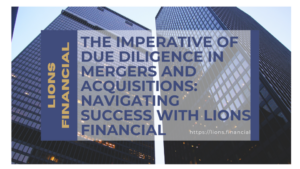
M&A Dealing With Headwinds, Part 1 of 10.
The economic weather has changed.
From post-Great Recession to pre-Great Pandemic, tailwinds propelled Mergers & Acquisitions deals. A decade of low price and wage inflation. Easy money, available at low interest rates. Reliable global supply chains of labor and materials. Steady corporate and household demand for products and services.
Then the Great Pandemic storm. Slammed by health emergency full shutdowns and partial lockdowns, supply chains broke. So, demand shifted. Price and wage inflation started rising above target levels. However, the unprecedented flood of government stimulus easy money, at low interest rates, further fueled M&A deals.
Now we?re into the post-pandemic Great Reset. Fiscal tightening, and serial high rises in interest rates. Trying to tame high price and high wage inflation. While also remaking broken supply chains. And coping with volatile corporate and household demand for products and services.
So, what?s happening with M&A deal numbers?

M&A Dealing With Headwinds, Part 2 of 10.
Globally, Mergers & Acquisitions deal $ volume has dropped 50% across all segments.
Mega plunged 72% in Q3 2022 vs. the average achieved per Quarter Q1 2017 to Q2 2022. Large dropped 23%. Upper- and core middle-market decreased 18%. Lower middle-market and small dipped 13%.
Further, the boost in M&A deals? $ volume expected after Labor Day didn?t happen. Buy-side waiting for sell-side to agree to lower valuations. Sell-side expecting high multiples paid in 2021. And both sides plagued by price and wage inflation, rising interest rates, fragile supply chains, and volatile demand.
Also, Limited Partners now concerned about imbalances in their investment allocations. When public company stocks lose value, LPs pause over-allocation into private equity. And though buy-side General Partners still have plenty of dry powder available for M&A deals, GPs face challenges in raising next funds.
Given the slowdown, what?s the mindset of M&A dealmakers?

M&A Dealing With Headwinds, Part 3 of 10.
Mergers & Acquisitions dealmakers? mindsets have shifted from frenzied auctions to careful matchmaking.
Refocusing M&A deal readiness prep to plan better matches. By redefining deal goals, objectives, strategy, tactics. Business models. Business optimization. Dealmaker teams. Funding. Investment criteria. Business valuation. Electronic data room materials. Sell-side and buy-side targets. Properly done, takes 1 ? 2 years.
Reengineering M&A dealmaking efficiency to execute better matches. From deal sourcing. To confidential information sharing. Non-binding indication of interest. Financial, operational, and legal due diligence. Negotiation. Binding investment agreement. And closing. Well done, takes 6 months.
Reshaping M&A deal value realization to build better matches. Starting immediately after deal closing. With revitalized shared vision, goals and objectives, strategy and tactics. Management and governance. Value creation and synergies. Priorities. Communication. Consistency. And clear exit criteria. Rightly done, takes 2+ years.
Given this more careful mindset, have M&A deal termination rates changed?

M&A Dealing With Headwinds, Part 4 of 10.
The private equity- or venture capital-backed Mergers & Acquisitions deal termination rate has increased.
Typically, termination of PE- or VC-backed M&A deals averages 10% of the total. However, year-to-date share of terminations increased 30% from 10% to 13% One positive aspect: the rate of terminated PE- or VC-backed M&A deals declined from 15% in Q2 to 12% in Q3.
Meanwhile, needle-in-haystack M&A deal flow funnel reality persists. Only about 1 in 300 M&A deals initially reviewed in 2022 resulted in a closed transaction.
And the drop-off rate at each stage of the M&A deal flow funnel remains steep. 45% drop-off from initial review to confidential information sharing agreement. 91% drop-off from confidential information sharing agreement to indication of interest. 61% drop-off from indication of interest to letter of interest. And 80% drop-off from letter of interest to closed transaction.
So, what types of M&A deals are more frequently getting done?
 M&A Dealing With Headwinds, Part 5 of 10.
M&A Dealing With Headwinds, Part 5 of 10.
The types of Mergers & Acquisitions deals most frequently getting done now are 1) add-ons, 2) debt-funded, 3) take-private.
As elsewhere, most businesses in USA are small. 98% of the total have annual revenue less than $5 million. 1% between $5 million up to less than $10 million. Less than 1.5% between $10 million up to less than $1 billion. Only 0.03% $1 billion or more.
The proportion of M&A deals closed in 2022 with add-on companies, vs. platform companies, is now almost 78%. The highest level ever recorded. Why ? Add-on deals are smaller in size. Therefore, easier to finance. With far less disagreement between buy-side and sell-side about valuation.
Also happening now: more private debt-funded M&A deals, with smaller proportions in equity. Smaller than the typical 70-30 stock-debt split common in M&A deals financed by bank loans.
Take-private M&A deals are popular.
So, what M&A deal strategy is currently preferred?

M&A Dealing With Headwinds, Part 6 of 10.
Currently, vertical integration Mergers & Acquisitions deals are preferred.
Primarily for supply chain stabilization purposes. Enabling enterprises to build agility and resilience against supply chain fragility. Vertical integration upstream enables access to key raw materials and components. Vertical integration downstream enables better control of how products and services are distributed.
This phenomenon is happening most in consumer staples, health care, utilities, energy, and consumer discretionary sectors. Enterprises in these sectors are urgently remaking their broken global supply chains of labor and materials. As a result, they?ve pivoted to onshoring and nearshoring solutions. To reduce supply chain lead times. And build greater resilience going forward.
Investors are also interested in technology companies which specialize in supply chain processes. Especially those able to capture and leverage data.
So, how is M&A deal sourcing being adjusted?

M&A Dealing With Headwinds, Part 7 of 10.
Currently, more Mergers & Acquisitions deals are being sourced in nondiscretionary spend B2B businesses in critical infrastructure sectors.
There are 16 critical infrastructure sectors. Chemical. Commercial Facilities. Communications. Critical Manufacturing. Dams. Defense Industrial Base. Emergency Services. Energy. Financial Services. Food and Agriculture. Government Facilities. Healthcare and Public Health. Information Technology. Nuclear Reactors, Materials, and Waste. Transportation Systems. Water and Wastewater Systems.
Enterprises in these sectors ? even those in lower middle market, small- to mid-, and upper small business segments ? are more mature and less distressed. So, M&A deals with the more worthwhile ones are frequently sourced off-market.
As a result, the buy-side and sell-side in these sectors are efficiently sourcing matches more frequently off-market. Leveraging fractionalized services and alternative fee arrangement service providers.
So, how is M&A deal due diligence being adjusted?

M&A Dealing With Headwinds, Part 8 of 10.
Currently, besides scrutiny of financials, deeper due diligence of operations is happening with an eye for improvement opportunities.
Operational improvements span all three core business functions: 1) Producing functions, such as Research & Development, Production & Quality, and Distribution & Logistics; 2) Selling functions, such as Sales, Marketing, Advertising, Public Relations, and Market Research; 3) Supporting functions, such as Information Technology, HR/Personnel, Buying/Purchasing, Management Accountancy, Accounting/Book-keeping, Legal, and Management Consultancy.
Continuous improvement in each business function involves an ongoing 4-step cyclical process: 1) Identify need for improvement; 2) Plan how it can be improved; 3) Execute changes; 4) Review the result of changes.
This prompts buy-side and sell-side to source and deliver operational improvements expertise. Leveraging fractionalized services and alternative fee arrangement service providers.
So, how are Mergers & Acquisitions deal negotiations being adjusted?

M&A Dealing With Headwinds, Part 9 of 10.
More Mergers & Acquisitions deals are now being negotiated with milestone-based earnouts and contingent rollover equity. To 1) bridge valuation gaps, 2) share risk between buyer and seller, 3) address key person exposure. Use of earnouts in PE-backed M&A deals has nearly doubled (1.67x) in 2022.
Sellers prefer revenue-based earnouts. They?re easier to achieve, calculate, and less susceptible to manipulation by buyers. Considerations: use of cash revenue vs. accrued revenue, timing of revenue recognition, treatment of uncollected receivables, non-recurring item and transaction expenses, synergies costs.
However, buyers prefer EBITDA because it?s a more meaningful Key Performance Indicator. Frequently, the agreed-to metric used in valuation, e.g., revenue-multiple, EBITDA-multiple, becomes the basis for negotiating earnout mix structure. Especially if that?s the metric that will be used for valuation of the target at exit.
Rollover equity in lieu of cash mitigates immediate capital gains tax for sellers.
So, how is M&A deal closing being adjusted?

M&A Dealing With Headwinds, Part 10 of 10.
Some Limited Partners seek more value before reupping with traditional General Partner-run Private Equity Funds.
These LPs are peeved traditional PE funds charge a fixed 2% fee for assets under management even for uncommitted capital stashed as unproductive dry powder.
Another of their peeves is traditional PE funds are ?blind pools.? LPs? role is strictly as passive financial investors. Meaning LPs have no say about investment picks, or their management. In today?s economic climate, capital gains from many of these investments is further weakened by the flat 20% bite taken by GPs.
Yet another of their peeves about traditional PE funds is the rigid 2- to 7-year investment window before harvest exit or the rigamarole of a rollover into a next fund.
These LPs see Independent Sponsor and Search Funds, by contrast, affording them alternative investment opportunities at lower cost, with more active decision-making, and more flexible investment windows.
Author
-

Keith focuses on providing business advisory and capital markets support services. To domestic USA, foreign-based, and multinational clients: both privately and publicly held (including state-owned) client enterprises. Of all sizes: Big, middle-market, small and medium-size. On the business advisory side: Keith develops optimization plans for clients' enterprises. And then supports the implementation of these plans. Through all phases of mergers and acquisitions activity: pre-deal, during-deal, post-deal. On the capital markets side: Keith supports buy-side and sell-side clients' capital raise, capital deployment, and mergers and acquisitions deal value stewardship initiatives. Through all rounds: from Seed, Series A, B, C, D, E, etc. pre-Initial Public Offer, IPO, and Follow-on Public Offer. To do so, he works with venture capital (including angels and family offices), private equity, and institutional investment providers. Also, debt capital providers: government agency, banks, mezzanine, and mortgage loan providers. Keith also works with legal, accounting, valuation, and underwriting specialist professionals. Bringing his blend of wide business and financial experience, and focused skills with relevant supporting data. Prior to joining Lions Financial: Keith enjoyed a 50+ year career as a business-to-business and business-to-consumer marketing professional. Starting out as a freshly minted MBA entry-level management trainee. Then rising through the ranks. To Chief Executive Officer and President. Keith worked on the client, agency, and marketing services provider side. He has worked in 28 countries worldwide. And has category experience across multiple industry sectors: including airlines, automotive, consumer packaged goods, energy, financial services (retail and commercial banks, credit and charge cards, insurance, real estate), health and beauty aids, healthcare (biotech, pharmaceutical, medical devices and diagnostic products, insurance payers, hospitals and clinics, pharmacies), hospitality (hotels and resorts), liquor, media and publishing (broadcast, Internet, print), retail (including e-tail), technology (hardware and software, telecommunications). Keith pivoted to focus on financial services over the past 12+ years, starting out at MetLife, then New York Life, to Lions Financial. Keith is a graduate of Bombay Scottish High School, an academically elite private school. And the University of Mumbai. His undergraduate studies focused on economics with statistics as his major. And his graduate studies focused on marketing with finance. Over the subsequent course of his career, Keith subsequently got various post-graduate professional certificates and licenses. Including advanced marketing, account planning, media planning and buying, negotiation skills, insurance and investments. Keith is a 30+ year resident on the Upper East Side, Manhattan.




